With the attention on federal and state efforts to deploy fast electric vehicle (EV) charging infrastructure along the nation's highways, we also need reliable access to good 'ole slow charging where we live, work, and play.
Stan Cross | July 27, 2023 | Clean Transportation, Electric Vehicles, North CarolinaHere’s a thing about Americans’ personal cars and trucks—they sit in driveways and parking lots 95% of the time, waiting for us to go somewhere. All this idle time creates opportunities to charge electric vehicles at our homes and workplaces, as well as destinations like shopping centers, hotels, and attractions. EVs can charge anywhere there’s access to electricity, which is nearly everywhere cars go; they do not require the gas station model we depend on to fuel our cars and trucks. No doubt, access to fast charging is necessary to support long-distance travel. But access to convenient and more affordable Level 1 and Level 2 slow charging is equally important to keep EVs going day in, day out.
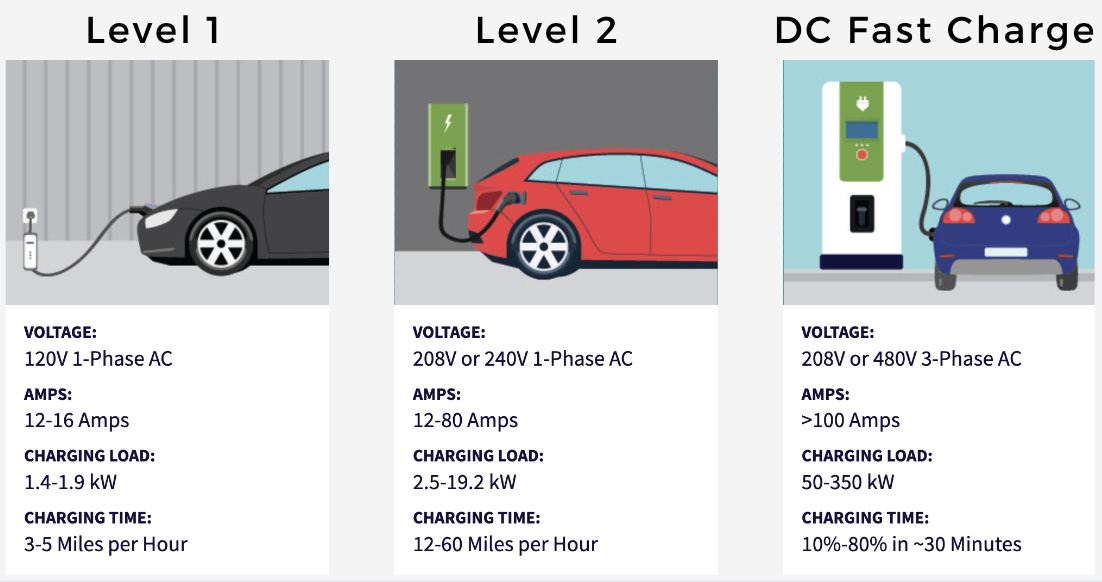
The National Renewable Energy Laboratory (NREL) recently released a study, The 2030 National Charging Network: Estimating U.S. Light-Duty Demand for Electric Vehicle Charging Infrastructure. The study confirms that America needs to build a robust nationwide fast-charging network quickly; and highlights the need for many public Level 2 and private Level 1 and Level 2 charging stations where we live, work, and play.
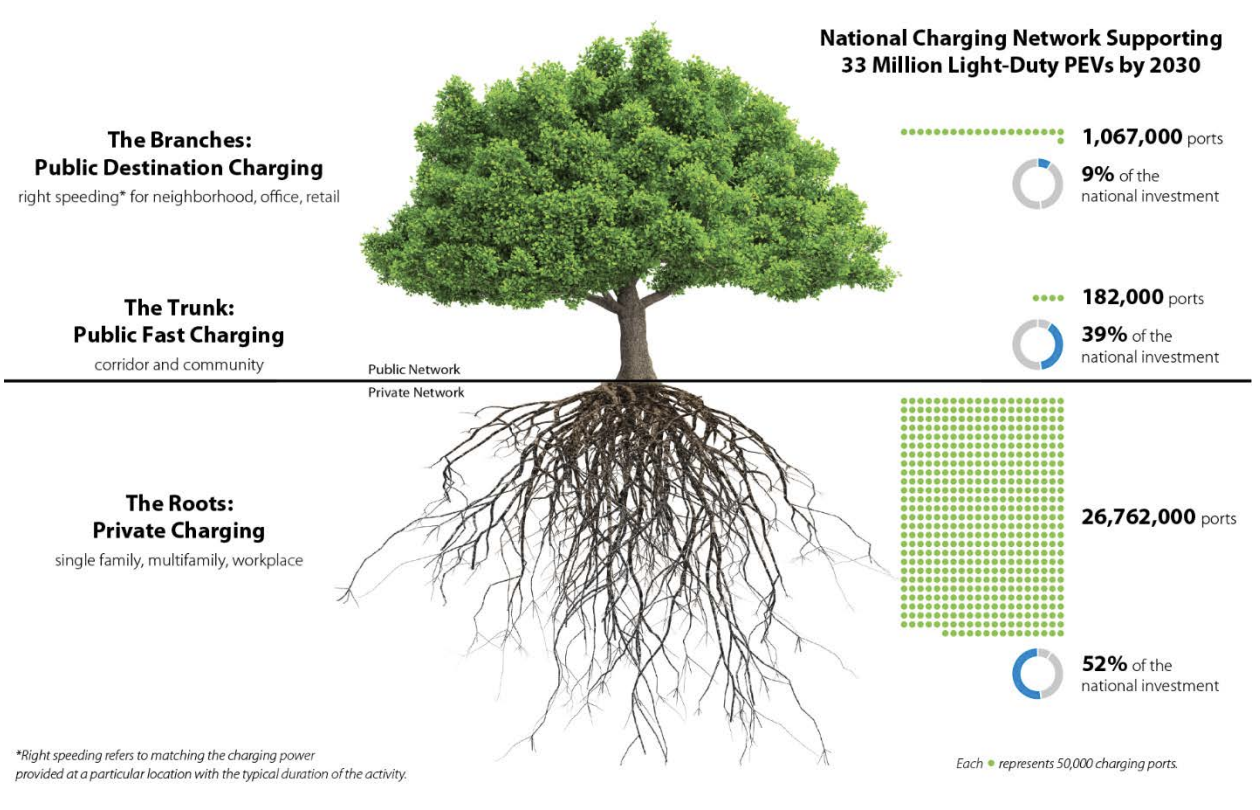
Among the key findings: we need to deploy lots of charging infrastructure to meet the anticipated 2030 charging demand from the expected 30-42 million EVs on the road. NREL estimates we will need a national network of ~28 million charging ports, made up of:
- 1.2 million public charging ports
- 182,000 fast chargers, primarily along highways
- 1 million Level 2 charging ports at publicly accessible locations, including destinations
- 26.8 million private Level 1 and Level 2 charging ports at locations including residential and workplace
It’s difficult to access the total number of private charging stations that have been deployed at residences and workplaces to date, but the number of public charging stations is pretty well known and gives a sense of the scaling challenge. We currently have about 137,000 publicly accessible charging ports, and based on NREL’s research, we need 1.8 million in seven years. There’s a lot of work to do.
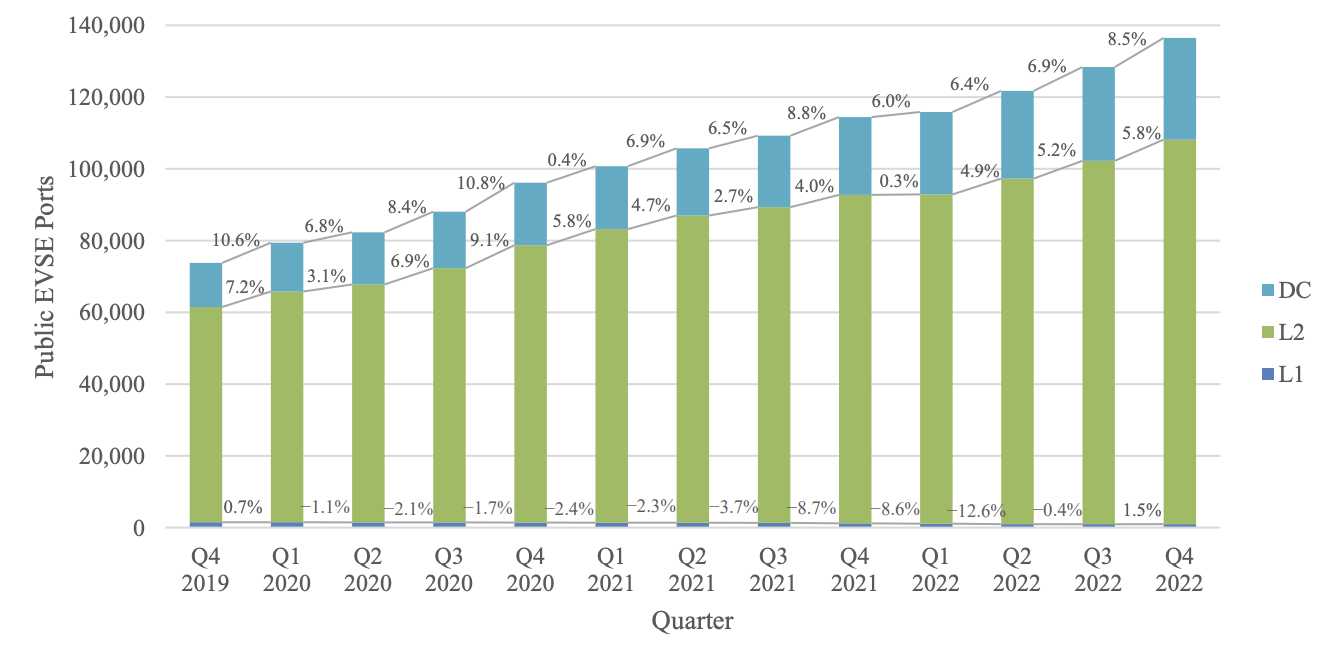
Slow charging at home and work
Residential charging is critical, and lack of access to home charging is the biggest barrier to EV adoption. Home is where EV drivers do about 85% of their charging and reap the most significant savings because residential electricity rates are much cheaper than a gallon of gas at the pump or electricity at a public fast charger. Plus, charging at home is very convenient; come home, plug in, go to bed, wake up with a full battery, repeat. Without access to charging at home, say for multi-unit dwellings like apartments, condos, and homes with on-street parking, EV ownership becomes an inconvenience and cost challenge most consumers will be unwilling to tackle. Hence, ensuring everyone can plug in at home is the most urgent EV charging challenge to overcome.
Workplace charging can help bridge the residential charging gap, providing consumers without home charging access to charging at work, where their car often sits for eight hours during the day. Workplace charging supports EV ownership for consumers with long commutes, which is a significant issue, especially in many rural communities. Chargers at work are also helpful for owners of older, shorter-range EVs. For workplaces with lower and moderate-income personnel, providing charging stations is an employee benefit that can enable people to purchase lower-cost, shorter-range, used EVs and support a more equitable EV transition.
Fast charging on the road
Recent surveys show approximately one-third of consumers are considering buying an EV. That’s significant impending demand, considering EVs currently make up around 8% of new car sales. Yet, access to fast chargers to extend EV range and enable long-distance travel remains a purchase barrier. This is why federal policymakers crafted the Bipartisan Infrastructure Law’s $5 billion National EV Infrastructure (NEVI) program to jumpstart a nationwide fast-charging network deployment.
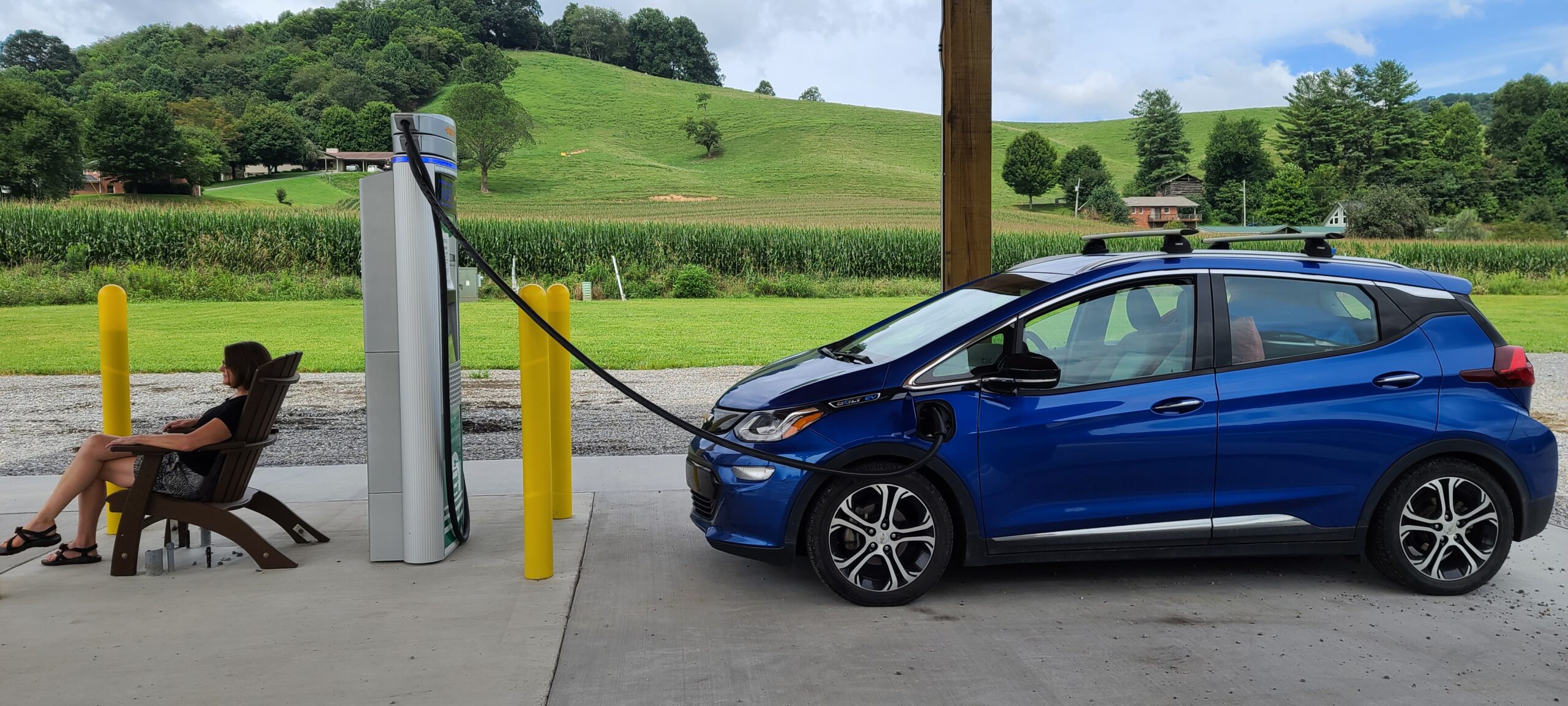
Today’s fast chargers are really fast, and new EV models can gobble up a lot of electricity quickly. A typical modern EV on a road trip needs to stop every 150-200 miles for a 15-20 minute fast charge because just like you would not run your gas tank to empty before filling up, you do not empty your battery before you stop to charge. Optimally, EV drivers stop at a fast charger when battery capacity reaches 15%-25% remaining and charge up to around 60%-70%. Between 70%-100%, EV batteries begin to significantly taper the speed of charging. This helps protect long-term battery health but also makes staying plugged into a fast charger to get that last 30% top-off inefficient. You’ll make better time on your road trip unplugging at around 70% and cruising on down the road another 150-200 miles to the next fast charger.
Every road trip ends at a destination
Even when we achieve the goal of deploying fast chargers along the nation’s highways from sea to shining sea, EV drivers face challenges when their road trip ends at a charger-less destination. Many destinations, especially hotels and attractions, including state and national parks, lack charging stations. So today, you’re more likely to wind up without destination charger access, especially if your destination is a more rural or remote location.
Case in point, I recently took a 1,000-mile EV road trip to remote Ocracoke Island on North Carolina’s Outer Banks, where I experienced the lack of destination EV charging.
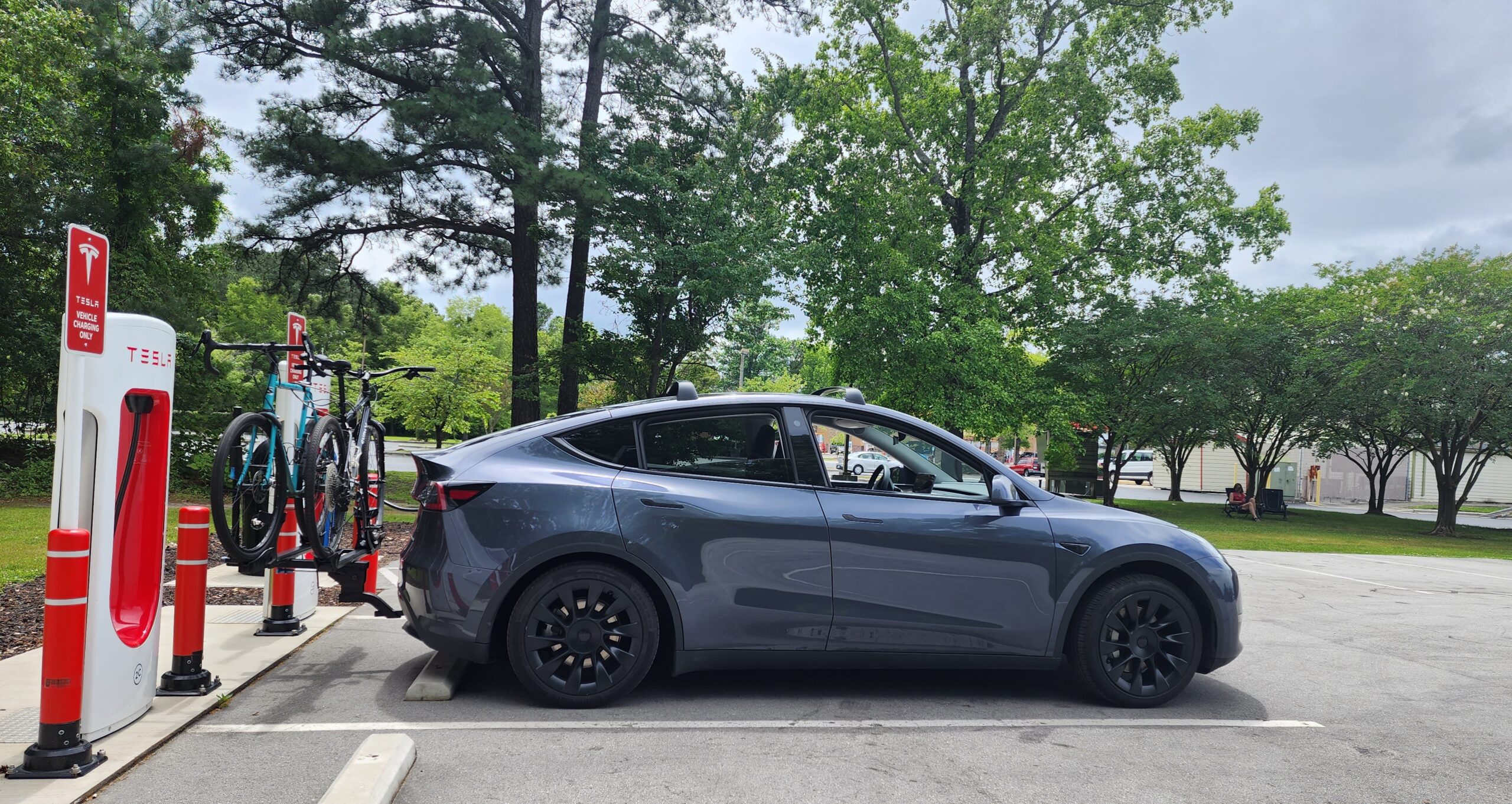
My wife and I took the road trip in a 330-mile-range Tesla Model Y from our home in the mountains of western North Carolina near Asheville. We charged along the way at reliable and convenient fast charging stations that are part of Tesla’s Supercharger network. Our last fast charge was outside New Bern, NC. Once we left the New Bern Supercharger, there weren’t any other charging stations on the map. From there, we went to Cedar Island for a few days before boarding the ferry to Ocracoke. By the time we made it out to Ocracoke, we had 50% battery charge remaining, enough to get back to the New Bern Supercharger when our week on Ocracoke was done, but barely.
It’s critical to access reliable and convenient fast charging to get to your destination, but that won’t do drivers any good if they wind up stuck. No matter how lovely it may sound to get stranded on a gorgeous Outer Banks island, that was not my desire. Lucky for us, there are a lot of golf carts on Ocracoke, and we were able to pretend our EV was one for a few days, plugging in Level 1-style to standard outlets mounted to a 4 x 4 wooden post and getting the charge we needed to enjoy the island and make it home worry-free. However, it took me about 30 hours to add 30% to the Tesla’s battery – definitely not ideal or sustainable.
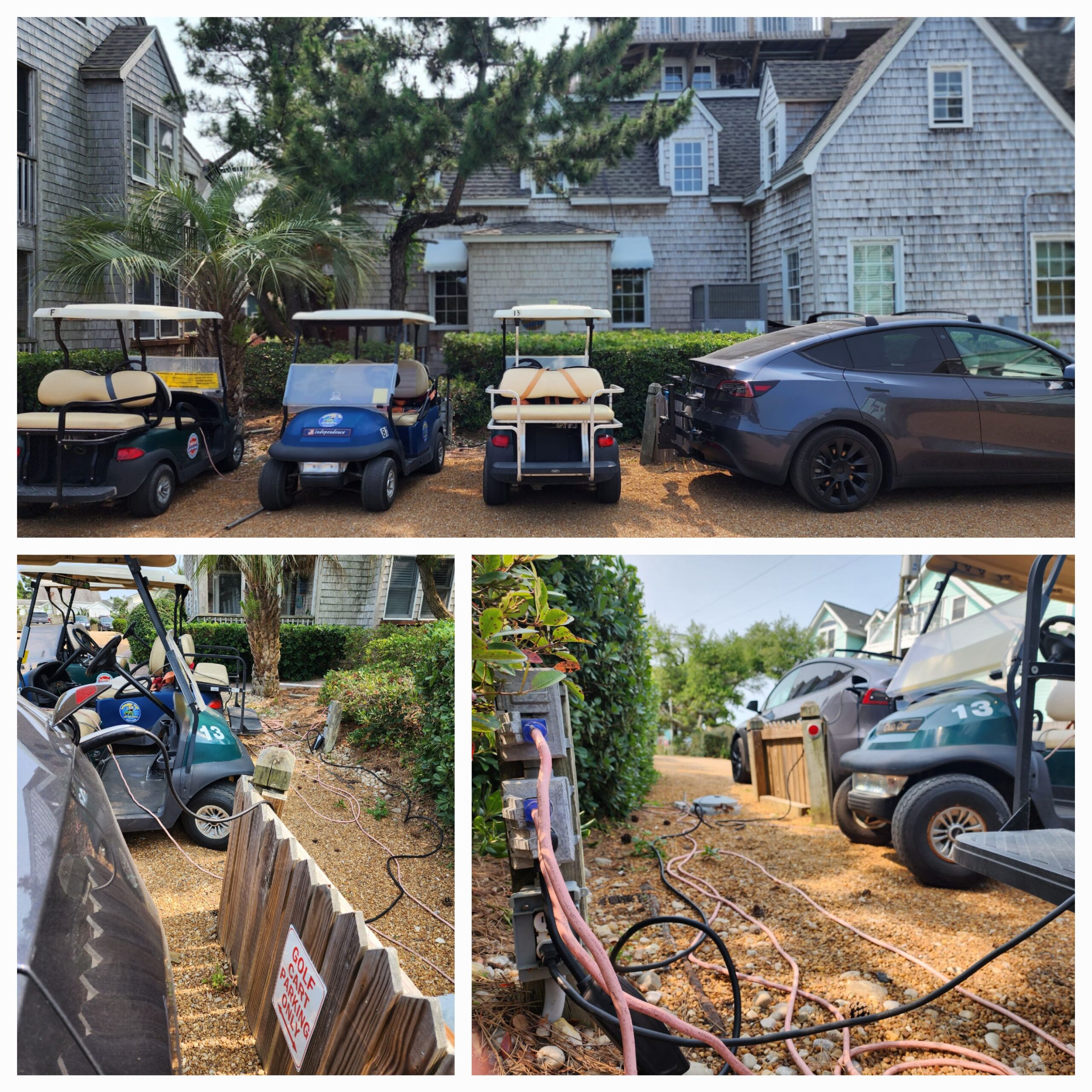
My Ocracoke story has two sides: one shows the need to invest in Level-2 destination charging, and the other shows that you can plug in an EV anywhere.
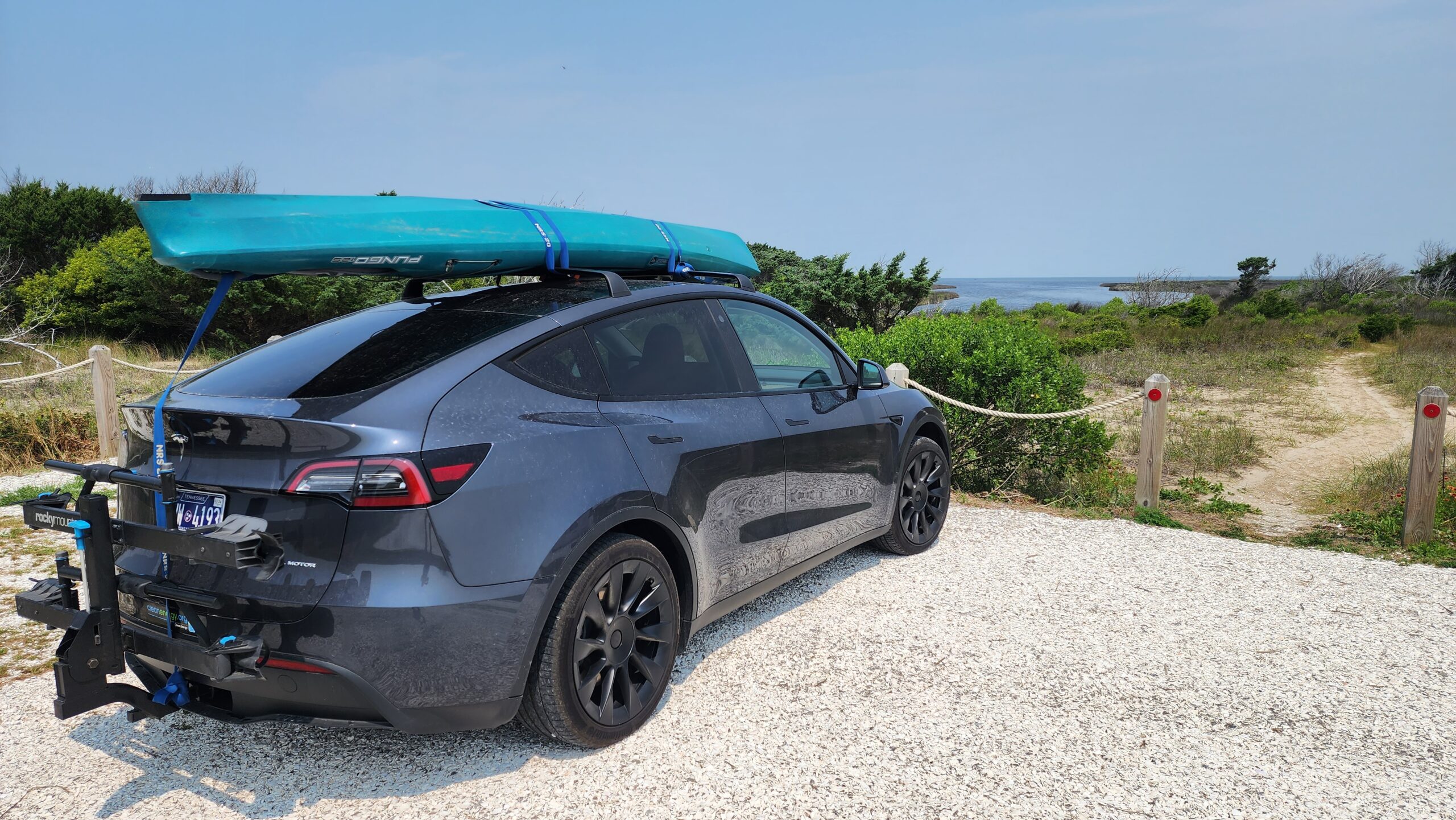
The slow-charging bonus
Residential, workplace, and destination charging can integrate well with existing electrical systems in homes, buildings, and the electrical grid. As you see above, EVs can plug into a regular 120-volt wall outlet like charging your phone, though, as I experienced, the charging is extremely slow.
A much better option is adding a Level-2 charger to a 240-volt circuit, like for a stove or dryer, that can charge an EV up in 4-10 hours, perfect for overnight or workday charging. Unlike fast charging, which draws very high levels of electricity rapidly, Level-2 chargers draw electricity much slower over extended periods. Hence, Level-2 chargers can put less strain on the electrical grid. And if the Level 2 charger is networked—a term that refers to a charger’s ability to communicate—electric utilities can use technical tools and charging behavior incentives to manage EV charging. Utilities have proven successful at encouraging EV drivers to charge when the electrical grid has an ample supply of power to avoid negatively impacting grid performance.
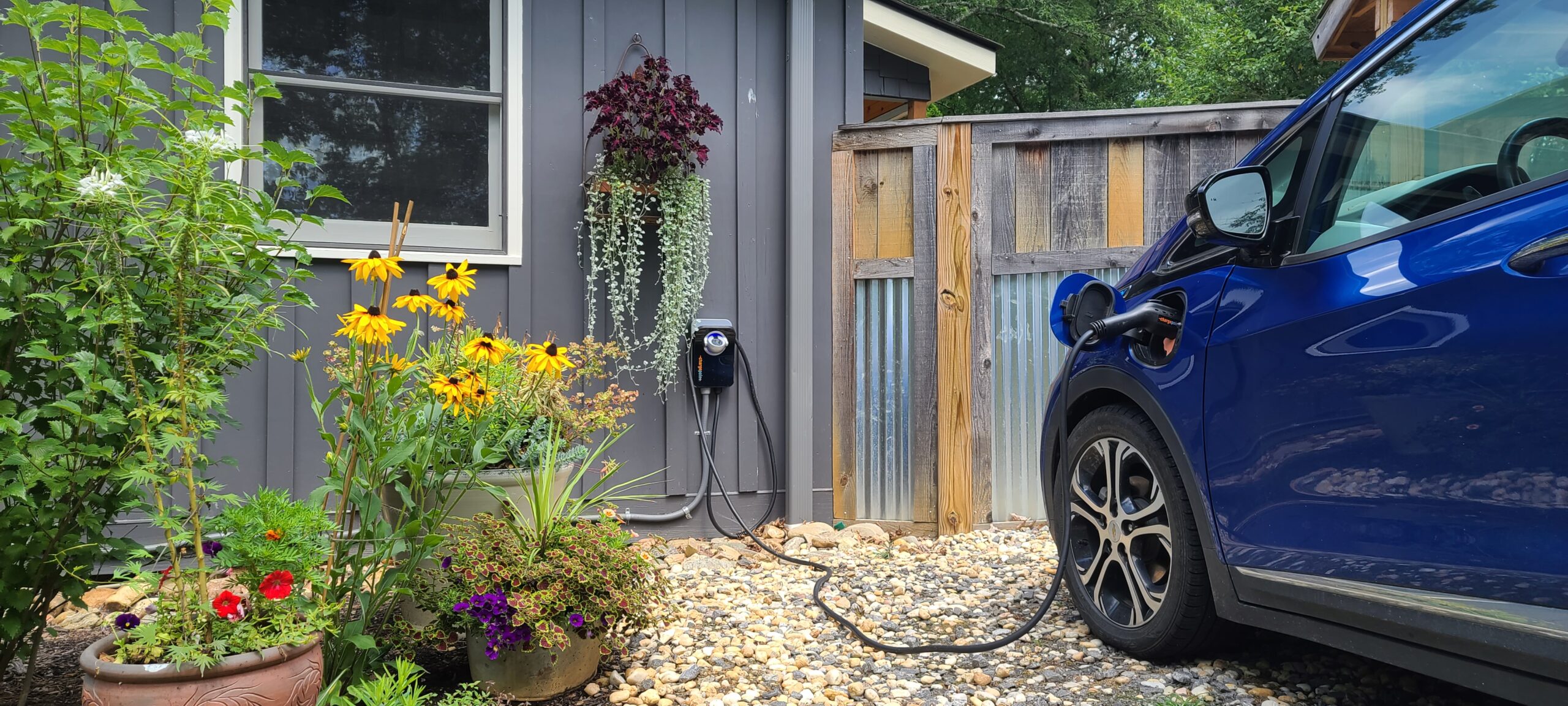
The more charging demand slower Level-2 chargers can meet, the more opportunities utilities will have to manage the transition to electricity as a transportation fuel. As the EV market share expands, managing charging effectively is the best strategy to avoid adding costly new electricity generation. Electrical grid upgrades will still be needed, including transmission (getting power from where it’s generated to where it’s required) and distribution (ensuring communities have sufficient electrical capacity), but by using managed charging wisely, we can avoid costly new powerplants in the near term.
Balancing slow and fast
An accessible, reliable, and convenient highway fast charging network will allow EV owners to drive anywhere, anytime. But without access to residential charging, EV ownership is not realistic for most consumers. Workplace charging can help supplement a lack of residential charging access and support consumers with long commutes and older, shorter-range EVs. And to extend the value of highway fast charging investments, we also need accessible charging at our destinations.
To meet the needs of the growing electric motoring public, we need to focus simultaneously on highway fast charging and slower charging where we live, work, and play. It’s a tall order, but necessary. Together, these infrastructure investments will support EV adoption for all.
The Southern Alliance for Clean Energy’s Electrify the South program leverages research, advocacy, and outreach to accelerate the equitable transition to electric transportation across the Southeast. Visit ElectrifytheSouth.org to learn more and connect with us.